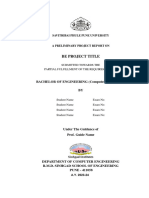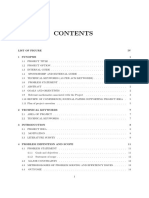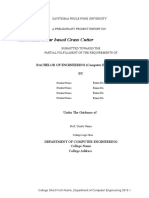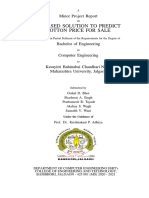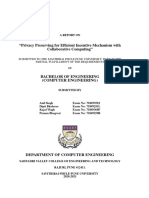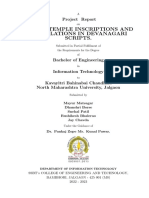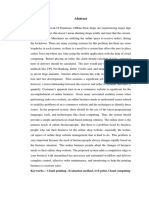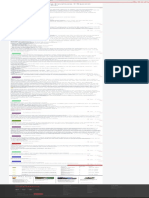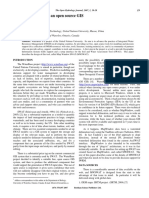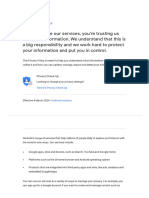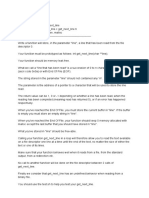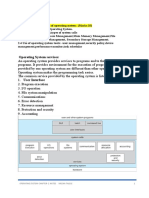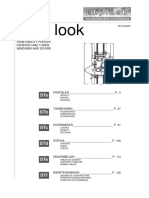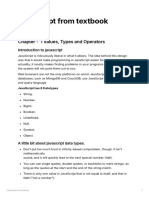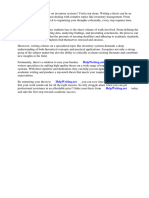SAVITRIBAI PHULE PUNE UNIVERSITY
A PROJECT REPORT ON
PROJECT TITLE
SUBMITTED TOWARDS THE
PARTIAL FULFILLMENT OF THE REQUIREMENTS OF
BACHELOR OF ENGINEERING (Computer Engineering)
BY
Student Name Exam No:
Student Name Exam No:
Student Name Exam No:
Student Name Exam No:
Under The Guidance of
Prof. Guide Name
DEPARTMENT OF COMPUTER ENGINEERING
College Name
College Address
College Name
DEPARTMENT OF COMPUTER ENGINEERING
CERTIFICATE
This is to certify that the Project Entitled
PROJECT TITLE
Submitted by
Student Name Exam No:
Student Name Exam No:
Student Name Exam No:
Student Name Exam No:
is a bonafide work carried out by Students under the supervision of Prof. Guide
Name and it is submitted towards the partial fulfillment of the requirement of Bach-
elor of Engineering (Computer Engineering).
Prof. Guide Name Prof. HOD Name
Internal Guide H.O.D
Dept. of Computer Engg. Dept. of Computer Engg.
Dr. A. V. Deshpande
Principal
Smt.Kashibai Navale College of Engineering
Signature of Internal Examiner Signature of External Examiner
PROJECT APPROVAL SHEET
A Project Title
(Project Title)
Is successfully completed by
Student Name Exam No:
Student Name Exam No:
Student Name Exam No:
Student Name Exam No:
at
DEPARTMENT OF COMPUTER ENGINEERING
(COLLEGE NAME)
SAVITRIBAI PHULE PUNE UNIVERSITY,PUNE
ACADEMIC YEAR 2015-2016
Prof. Guide Name Prof. HOD Name
Internal Guide H.O.D
Dept. of Computer Engg. Dept. of Computer Engg.
Abstract
Please Write here One Page Abstract. It should mainly include introduction, moti-
vation,outcome and innovation if any.
College Short Form Name, Department of Computer Engineering 2015-16 I
Acknowledgments
Please Write here Acknowledgment.Example given as
It gives us great pleasure in presenting the preliminary project report on ‘BE
PROJECT TITLE’.
I would like to take this opportunity to thank my internal guide Prof. Guide Name
for giving me all the help and guidance I needed. I am really grateful to them for
their kind support. Their valuable suggestions were very helpful.
I am also grateful to Prof. HOD Name, Head of Computer Engineering Department,
CollegeName for his indispensable support, suggestions.
In the end our special thanks to Other Person Name for providing various resources
such as laboratory with all needed software platforms, continuous Internet connec-
tion, for Our Project.
Student Name1
Student Name2
Student Name3
Student Name4
(B.E. Computer Engg.)
College Short Form Name, Department of Computer Engineering 2015-16 II
INDEX
1 Synopsis 1
1.1 Project Title . . . . . . . . . . . . . . . . . . . . . . . . . . . . . . 2
1.2 Project Option . . . . . . . . . . . . . . . . . . . . . . . . . . . . 2
1.3 Internal Guide . . . . . . . . . . . . . . . . . . . . . . . . . . . . . 2
1.4 Sponsorship and External Guide . . . . . . . . . . . . . . . . . . . 2
1.5 Technical Keywords (As per ACM Keywords) . . . . . . . . . . . . 2
1.6 Problem Statement . . . . . . . . . . . . . . . . . . . . . . . . . . 2
1.7 Abstract . . . . . . . . . . . . . . . . . . . . . . . . . . . . . . . . 3
1.8 Goals and Objectives . . . . . . . . . . . . . . . . . . . . . . . . . 3
1.9 Relevant mathematics associated with the Project . . . . . . . . . . 3
1.10 Names of Conferences / Journals where papers can be published . . 3
1.11 Review of Conference/Journal Papers supporting Project idea . . . . 4
1.12 Plan of Project Execution . . . . . . . . . . . . . . . . . . . . . . . 4
2 Technical Keywords 5
2.1 Area of Project . . . . . . . . . . . . . . . . . . . . . . . . . . . . 6
2.2 Technical Keywords . . . . . . . . . . . . . . . . . . . . . . . . . . 6
3 Introduction 7
3.1 Project Idea . . . . . . . . . . . . . . . . . . . . . . . . . . . . . . 8
3.2 Motivation of the Project . . . . . . . . . . . . . . . . . . . . . . . 8
3.3 Literature Survey . . . . . . . . . . . . . . . . . . . . . . . . . . . 8
4 Problem Definition and scope 9
4.1 Problem Statement . . . . . . . . . . . . . . . . . . . . . . . . . . 10
4.1.1 Goals and objectives . . . . . . . . . . . . . . . . . . . . . 10
4.1.2 Statement of scope . . . . . . . . . . . . . . . . . . . . . . 10
4.2 Major Constraints . . . . . . . . . . . . . . . . . . . . . . . . . . . 10
4.3 Methodologies of Problem solving and efficiency issues . . . . . . . 10
4.4 Outcome . . . . . . . . . . . . . . . . . . . . . . . . . . . . . . . . 10
4.5 Applications . . . . . . . . . . . . . . . . . . . . . . . . . . . . . . 11
4.6 Hardware Resources Required . . . . . . . . . . . . . . . . . . . . 11
4.7 Software Resources Required . . . . . . . . . . . . . . . . . . . . . 11
5 Project Plan 12
5.1 Project Estimates . . . . . . . . . . . . . . . . . . . . . . . . . . . 13
5.1.1 Reconciled Estimates . . . . . . . . . . . . . . . . . . . . . 13
5.1.2 Project Resources . . . . . . . . . . . . . . . . . . . . . . . 13
5.2 Risk Management w.r.t. NP Hard analysis . . . . . . . . . . . . . . 13
5.2.1 Risk Identification . . . . . . . . . . . . . . . . . . . . . . 13
5.2.2 Risk Analysis . . . . . . . . . . . . . . . . . . . . . . . . . 14
5.2.3 Overview of Risk Mitigation, Monitoring, Management . . 15
5.3 Project Schedule . . . . . . . . . . . . . . . . . . . . . . . . . . . 15
5.3.1 Project task set . . . . . . . . . . . . . . . . . . . . . . . . 15
5.3.2 Task network . . . . . . . . . . . . . . . . . . . . . . . . . 16
5.3.3 Timeline Chart . . . . . . . . . . . . . . . . . . . . . . . . 16
5.4 Team Organization . . . . . . . . . . . . . . . . . . . . . . . . . . 16
5.4.1 Team structure . . . . . . . . . . . . . . . . . . . . . . . . 16
5.4.2 Management reporting and communication . . . . . . . . . 16
6 Software requirement specification 17
6.1 Introduction . . . . . . . . . . . . . . . . . . . . . . . . . . . . . . 18
6.1.1 Purpose and Scope of Document . . . . . . . . . . . . . . . 18
6.1.2 Overview of responsibilities of Developer . . . . . . . . . . 18
6.2 Usage Scenario . . . . . . . . . . . . . . . . . . . . . . . . . . . . 18
6.2.1 User profiles . . . . . . . . . . . . . . . . . . . . . . . . . 18
6.2.2 Use-cases . . . . . . . . . . . . . . . . . . . . . . . . . . . 18
College Short Form Name, Department of Computer Engineering 2015-16 IV
6.2.3 Use Case View . . . . . . . . . . . . . . . . . . . . . . . . 18
6.3 Data Model and Description . . . . . . . . . . . . . . . . . . . . . 19
6.3.1 Data Description . . . . . . . . . . . . . . . . . . . . . . . 19
6.3.2 Data objects and Relationships . . . . . . . . . . . . . . . . 19
6.4 Functional Model and Description . . . . . . . . . . . . . . . . . . 19
6.4.1 Data Flow Diagram . . . . . . . . . . . . . . . . . . . . . . 20
6.4.2 Activity Diagram: . . . . . . . . . . . . . . . . . . . . . . 20
6.4.3 Non Functional Requirements: . . . . . . . . . . . . . . . . 20
6.4.4 State Diagram: . . . . . . . . . . . . . . . . . . . . . . . . 20
6.4.5 Design Constraints . . . . . . . . . . . . . . . . . . . . . . 20
6.4.6 Software Interface Description . . . . . . . . . . . . . . . . 20
7 Detailed Design Document using Appendix A and B 22
7.1 Introduction . . . . . . . . . . . . . . . . . . . . . . . . . . . . . . 23
7.2 Architectural Design . . . . . . . . . . . . . . . . . . . . . . . . . 23
7.3 Data design (using Appendices A and B) . . . . . . . . . . . . . . . 23
7.3.1 Internal software data structure . . . . . . . . . . . . . . . . 23
7.3.2 Global data structure . . . . . . . . . . . . . . . . . . . . . 24
7.3.3 Temporary data structure . . . . . . . . . . . . . . . . . . . 24
7.3.4 Database description . . . . . . . . . . . . . . . . . . . . . 24
7.4 Compoent Design . . . . . . . . . . . . . . . . . . . . . . . . . . . 24
7.4.1 Class Diagram . . . . . . . . . . . . . . . . . . . . . . . . 24
8 Project Implementation 26
8.1 Introduction . . . . . . . . . . . . . . . . . . . . . . . . . . . . . . 27
8.2 Tools and Technologies Used . . . . . . . . . . . . . . . . . . . . . 27
8.3 Methodologies/Algorithm Details . . . . . . . . . . . . . . . . . . 27
8.3.1 Algorithm 1/Pseudo Code . . . . . . . . . . . . . . . . . . 27
8.3.2 Algorithm 2/Pseudo Code . . . . . . . . . . . . . . . . . . 27
8.4 Verification and Validation for Acceptance . . . . . . . . . . . . . . 27
9 Software Testing 28
9.1 Type of Testing Used . . . . . . . . . . . . . . . . . . . . . . . . . 29
College Short Form Name, Department of Computer Engineering 2015-16 V
9.2 Test Cases and Test Results . . . . . . . . . . . . . . . . . . . . . . 29
10 Results 30
10.1 Screen shots . . . . . . . . . . . . . . . . . . . . . . . . . . . . . . 31
10.2 Outputs . . . . . . . . . . . . . . . . . . . . . . . . . . . . . . . . 31
11 Deployment and Maintenance 32
11.1 Installation and un-installation . . . . . . . . . . . . . . . . . . . . 33
11.2 User help . . . . . . . . . . . . . . . . . . . . . . . . . . . . . . . 33
12 Conclusion and future scope 34
Annexure A References 36
Annexure B Laboratory assignments on Project Analysis of Algorithmic
Design 37
Annexure C Laboratory assignments on Project Quality and Reliability
Testing of Project Design 38
Annexure D Project Planner 39
Annexure E Reviewers Comments of Paper Submitted 40
Annexure F Plagiarism Report 41
Annexure G Term-II Project Laboratory Assignments 42
Annexure H Information of Project Group Members 43
College Short Form Name, Department of Computer Engineering 2015-16 VI
List of Figures
6.1 Use case diagram . . . . . . . . . . . . . . . . . . . . . . . . . . . 19
6.2 State transition diagram . . . . . . . . . . . . . . . . . . . . . . . . 21
7.1 Architecture diagram . . . . . . . . . . . . . . . . . . . . . . . . . 23
7.2 Class Diagram . . . . . . . . . . . . . . . . . . . . . . . . . . . . . 25
List of Tables
4.1 Hardware Requirements . . . . . . . . . . . . . . . . . . . . . . . 11
5.1 Risk Table . . . . . . . . . . . . . . . . . . . . . . . . . . . . . . . 14
5.2 Risk Probability definitions [?] . . . . . . . . . . . . . . . . . . . . 14
5.3 Risk Impact definitions [?] . . . . . . . . . . . . . . . . . . . . . . 14
6.1 Use Cases . . . . . . . . . . . . . . . . . . . . . . . . . . . . . . . 18
B.1 IDEA Matrix . . . . . . . . . . . . . . . . . . . . . . . . . . . . . 37
CHAPTER 1
SYNOPSIS
1.1 PROJECT TITLE
Project Title
1.2 PROJECT OPTION
Please mention type either industry sponsored, entrepreneur or internal project
1.3 INTERNAL GUIDE
Prof. Internal Guide Name
1.4 SPONSORSHIP AND EXTERNAL GUIDE
Please write if any sponsorship
1.5 TECHNICAL KEYWORDS (AS PER ACM KEYWORDS)
Please note ACM Keywords can be found : http://www.acm.org/about/class/ccs98-
html
Example is given as
1. C. Computer Systems Organization
(a) C.2 COMPUTER-COMMUNICATION NETWORKS
i. C.2.4 Distributed Systems
A. Client/server
B. Distributed applications
C. Distributed databases
D. Network operating systems
E. Distributed file systems
F. Security and reliability issues in distributed applications
1.6 PROBLEM STATEMENT
Define Problem Statement
College Short Form Name, Department of Computer Engineering 2015-16 2
1.7 ABSTRACT
• Abstract (10 to 15 lines)
1.8 GOALS AND OBJECTIVES
• Objectives
1.9 RELEVANT MATHEMATICS ASSOCIATED WITH THE PROJECT
System Description:
• Input:
• Output:
• Identify data structures, classes, divide and conquer strategies to exploit dis-
tributed/parallel/concurrent processing, constraints.
• Functions : Identify Objects, Morphisms, Overloading in functions, Func-
tional relations
• Mathematical formulation if possible
• Success Conditions:
• Failure Conditions:
1.10 NAMES OF CONFERENCES / JOURNALS WHERE PAPERS CAN
BE PUBLISHED
• IEEE/ACM Conference/Journal 1
• Conferences/workshops in IITs
• Central Universities or SPPU Conferences
• IEEE/ACM Conference/Journal 2
College Short Form Name, Department of Computer Engineering 2015-16 3
1.11 REVIEW OF CONFERENCE/JOURNAL PAPERS SUPPORTING PROJECT
IDEA
Atleast 10 papers + White papers or web references
Brief literature survey [ Description containing important description of at least 10
papers
1.12 PLAN OF PROJECT EXECUTION
Using planner or alike project management tool.
College Short Form Name, Department of Computer Engineering 2015-16 4
CHAPTER 2
TECHNICAL KEYWORDS
2.1 AREA OF PROJECT
Project Area
2.2 TECHNICAL KEYWORDS
Please note ACM Keywords can be found : http://www.acm.org/about/class/ccs98-
html
Example is given as
1. C. Computer Systems Organization
(a) C.2 COMPUTER-COMMUNICATION NETWORKS
i. C.2.4 Distributed Systems
A. Client/server
B. Distributed applications
C. Distributed databases
D. Network operating systems
E. Distributed file systems
F. Security and reliability issues in distributed applications
College Short Form Name, Department of Computer Engineering 2015-16 6
CHAPTER 3
INTRODUCTION
3.1 PROJECT IDEA
• Project Idea
3.2 MOTIVATION OF THE PROJECT
• Motivation of the Project
3.3 LITERATURE SURVEY
• Review of the papers, Description , Mathematical Terms
College Short Form Name, Department of Computer Engineering 2015-16 8
CHAPTER 4
PROBLEM DEFINITION AND SCOPE
4.1 PROBLEM STATEMENT
Description of Problem
4.1.1 Goals and objectives
Goal and Objectives:
• Overall goals and objectives of software, input and output description with
necessary syntax, format etc are described
4.1.2 Statement of scope
• A description of the software with Size of input, bounds on input, input val-
idation, input dependency, i/o state diagram, Major inputs, and outputs are
described without regard to implementation detail.
• The scope identifies what the product is and is not, what it will and wont do,
what it will and wont contain.
4.2 MAJOR CONSTRAINTS
• Any constraints that will impact the manner in which the software is to be
specified, designed, implemented or tested are noted here.
4.3 METHODOLOGIES OF PROBLEM SOLVING AND EFFICIENCY IS-
SUES
• The single problem can be solved by different solutions. This considers the
performance parameters for each approach. Thus considers the efficiency is-
sues.
4.4 OUTCOME
• Outcome of the project
College Short Form Name, Department of Computer Engineering 2015-16 10
4.5 APPLICATIONS
• Applications of Project
4.6 HARDWARE RESOURCES REQUIRED
Sr. No. Parameter Minimum Requirement Justification
1 CPU Speed 2 GHz Remark Required
2 RAM 3 GB Remark Required
Table 4.1: Hardware Requirements
4.7 SOFTWARE RESOURCES REQUIRED
Platform :
1. Operating System:
2. IDE:
3. Programming Language
College Short Form Name, Department of Computer Engineering 2015-16 11
CHAPTER 5
PROJECT PLAN
5.1 PROJECT ESTIMATES
Use Waterfall model and associated streams derived from assignments 1,2, 3, 4 and
5( Annex A and B) for estimation.
5.1.1 Reconciled Estimates
5.1.1.1 Cost Estimate
5.1.1.2 Time Estimates
5.1.2 Project Resources
Project resources [People, Hardware, Software, Tools and other resources] based on
Memory Sharing, IPC, and Concurrency derived using appendices to be referred.
5.2 RISK MANAGEMENT W.R.T. NP HARD ANALYSIS
This section discusses Project risks and the approach to managing them.
5.2.1 Risk Identification
For risks identification, review of scope document, requirements specifications and
schedule is done. Answers to questionnaire revealed some risks. Each risk is cate-
gorized as per the categories mentioned in [?]. Please refer table 5.1 for all the risks.
You can refereed following risk identification questionnaire.
1. Have top software and customer managers formally committed to support the
project?
2. Are end-users enthusiastically committed to the project and the system/product
to be built?
3. Are requirements fully understood by the software engineering team and its
customers?
4. Have customers been involved fully in the definition of requirements?
5. Do end-users have realistic expectations?
College Short Form Name, Department of Computer Engineering 2015-16 13
6. Does the software engineering team have the right mix of skills?
7. Are project requirements stable?
8. Is the number of people on the project team adequate to do the job?
9. Do all customer/user constituencies agree on the importance of the project and
on the requirements for the system/product to be built?
5.2.2 Risk Analysis
The risks for the Project can be analyzed within the constraints of time and quality
Impact
ID Risk Description Probability
Schedule Quality Overall
1 Description 1 Low Low High High
2 Description 2 Low Low High High
Table 5.1: Risk Table
Probability Value Description
High Probability of occurrence is > 75%
Medium Probability of occurrence is 26 − 75%
Low Probability of occurrence is < 25%
Table 5.2: Risk Probability definitions [?]
Impact Value Description
Very high > 10% Schedule impact or Unacceptable quality
High 5 − 10% Schedule impact or Some parts of the project have low
quality
Medium < 5% Schedule impact or Barely noticeable degradation in qual-
ity Low Impact on schedule or Quality can be incorporated
Table 5.3: Risk Impact definitions [?]
College Short Form Name, Department of Computer Engineering 2015-16 14
5.2.3 Overview of Risk Mitigation, Monitoring, Management
Following are the details for each risk.
Risk ID 1
Risk Description Description 1
Category Development Environment.
Source Software requirement Specification document.
Probability Low
Impact High
Response Mitigate
Strategy Strategy
Risk Status Occurred
Risk ID 2
Risk Description Description 2
Category Requirements
Source Software Design Specification documentation review.
Probability Low
Impact High
Response Mitigate
Strategy Better testing will resolve this issue.
Risk Status Identified
5.3 PROJECT SCHEDULE
5.3.1 Project task set
Major Tasks in the Project stages are:
• Task 1:
• Task 2:
• Task 3:
College Short Form Name, Department of Computer Engineering 2015-16 15
Risk ID 3
Risk Description Description 3
Category Technology
Source This was identified during early development and testing.
Probability Low
Impact Very High
Response Accept
Strategy Example Running Service Registry behind proxy balancer
Risk Status Identified
• Task 4:
• Task 5:
5.3.2 Task network
Project tasks and their dependencies are noted in this diagrammatic form.
5.3.3 Timeline Chart
A project timeline chart is presented. This may include a time line for the entire
project. Above points should be covered in Project Planner as Annex C and you can
mention here Please refer Annex C for the planner
5.4 TEAM ORGANIZATION
The manner in which staff is organized and the mechanisms for reporting are noted.
5.4.1 Team structure
The team structure for the project is identified. Roles are defined.
5.4.2 Management reporting and communication
Mechanisms for progress reporting and inter/intra team communication are identi-
fied as per assessment sheet and lab time table.
College Short Form Name, Department of Computer Engineering 2015-16 16
CHAPTER 6
SOFTWARE REQUIREMENT
SPECIFICATION
6.1 INTRODUCTION
6.1.1 Purpose and Scope of Document
The purpose of SRS and what it covers is to be stated
6.1.2 Overview of responsibilities of Developer
What all activities carried out by developer?
6.2 USAGE SCENARIO
This section provides various usage scenarios for the system to be developed.
6.2.1 User profiles
The profiles of all user categories are described here.(Actors and their Description)
6.2.2 Use-cases
All use-cases for the software are presented. Description of all main Use cases using
use case template is to be provided.
Sr No. Use Case Description Actors Assumptions
1 Use Case 1 Description Actors Assumption
Table 6.1: Use Cases
6.2.3 Use Case View
Use Case Diagram. Example is given below
College Short Form Name, Department of Computer Engineering 2015-16 18
Figure 6.1: Use case diagram
6.3 DATA MODEL AND DESCRIPTION
6.3.1 Data Description
Data objects that will be managed/manipulated by the software are described in this
section. The database entities or files or data structures required to be described. For
data objects details can be given as below
6.3.2 Data objects and Relationships
Data objects and their major attributes and relationships among data objects are de-
scribed using an ERD- like form.
6.4 FUNCTIONAL MODEL AND DESCRIPTION
A description of each major software function, along with data flow (structured anal-
ysis) or class hierarchy (Analysis Class diagram with class description for object
oriented system) is presented.
College Short Form Name, Department of Computer Engineering 2015-16 19
6.4.1 Data Flow Diagram
6.4.1.1 Level 0 Data Flow Diagram
6.4.1.2 Level 1 Data Flow Diagram
6.4.2 Activity Diagram:
• The Activity diagram represents the steps taken.
6.4.3 Non Functional Requirements:
• Interface Requirements
• Performance Requirements
• Software quality attributes such as availability [ related to Reliability], modi-
fiability [includes portability, reusability, scalability] , performance, security,
testability and usability[includes self adaptability and user adaptability]
6.4.4 State Diagram:
State Transition Diagram
Fig.6.2 example shows the state transition diagram of Cloud SDK. The states are
represented in ovals and state of system gets changed when certain events occur.
The transitions from one state to the other are represented by arrows. The Figure
shows important states and events that occur while creating new project.
6.4.5 Design Constraints
Any design constraints that will impact the subsystem are noted.
6.4.6 Software Interface Description
The software interface(s)to the outside world is(are) described. The requirements for
interfaces to other devices/systems/networks/human are stated.
College Short Form Name, Department of Computer Engineering 2015-16 20
Figure 6.2: State transition diagram
College Short Form Name, Department of Computer Engineering 2015-16 21
CHAPTER 7
DETAILED DESIGN DOCUMENT USING
APPENDIX A AND B
7.1 INTRODUCTION
This document specifies the design that is used to solve the problem of Product.
7.2 ARCHITECTURAL DESIGN
A description of the program architecture is presented. Subsystem design or Block
diagram,Package Diagram,Deployment diagram with description is to be presented.
Figure 7.1: Architecture diagram
7.3 DATA DESIGN (USING APPENDICES A AND B)
A description of all data structures including internal, global, and temporary data
structures, database design (tables), file formats.
7.3.1 Internal software data structure
Data structures that are passed among components the software are described.
College Short Form Name, Department of Computer Engineering 2015-16 23
7.3.2 Global data structure
Data structured that are available to major portions of the architecture are described.
7.3.3 Temporary data structure
Files created for interim use are described.
7.3.4 Database description
Database(s) / Files created/used as part of the application is(are) described.
7.4 COMPOENT DESIGN
Class diagrams, Interaction Diagrams, Algorithms. Description of each component
description required.
7.4.1 Class Diagram
College Short Form Name, Department of Computer Engineering 2015-16 24
Figure 7.2: Class Diagram
College Short Form Name, Department of Computer Engineering 2015-16 25
CHAPTER 8
PROJECT IMPLEMENTATION
8.1 INTRODUCTION
8.2 TOOLS AND TECHNOLOGIES USED
8.3 METHODOLOGIES/ALGORITHM DETAILS
8.3.1 Algorithm 1/Pseudo Code
8.3.2 Algorithm 2/Pseudo Code
8.4 VERIFICATION AND VALIDATION FOR ACCEPTANCE
College Short Form Name, Department of Computer Engineering 2015-16 27
CHAPTER 9
SOFTWARE TESTING
9.1 TYPE OF TESTING USED
Unit,Integration,system etc.
9.2 TEST CASES AND TEST RESULTS
for each type of testing done.
College Short Form Name, Department of Computer Engineering 2015-16 29
CHAPTER 10
RESULTS
10.1 SCREEN SHOTS
Outputs / Snap shots of the results
10.2 OUTPUTS
Outputs / Snap shots of the results
College Short Form Name, Department of Computer Engineering 2015-16 31
CHAPTER 11
DEPLOYMENT AND MAINTENANCE
11.1 INSTALLATION AND UN-INSTALLATION
11.2 USER HELP
College Short Form Name, Department of Computer Engineering 2015-16 33
CHAPTER 12
CONCLUSION AND FUTURE SCOPE
Write summary , conclusion and future scope
College Short Form Name, Department of Computer Engineering 2015-16 35
ANNEXURE A
REFERENCES
(Strictly in ACM Format)
College Short Form Name, Department of Computer Engineering 2015-16 37
ANNEXURE B
LABORATORY ASSIGNMENTS ON
PROJECT ANALYSIS OF ALGORITHMIC
DESIGN
• To develop the problem under consideration and justify feasibilty using con-
cepts of knowledge canvas and IDEA Matrix.
Refer [?] for IDEA Matrix and Knowledge canvas model. Case studies are
given in this book. IDEA Matrix is represented in the following form. Knowl-
edge canvas represents about identification of opportunity for product. Feasi-
bility is represented w.r.t. business perspective.
I D E A
Increase Drive Educate Accelerate
Improve Deliver Evaluate Associate
Ignore Decrease Eliminate Avoid
Table B.1: IDEA Matrix
• Project problem statement feasibility assessment using NP-Hard, NP-Complete
or satisfy ability issues using modern algebra and/or relevant mathematical
models.
• input x,output y, y=f(x)
College Short Form Name, Department of Computer Engineering 2015-16 39
ANNEXURE C
LABORATORY ASSIGNMENTS ON
PROJECT QUALITY AND RELIABILITY
TESTING OF PROJECT DESIGN
It should include assignments such as
• Use of divide and conquer strategies to exploit distributed/parallel/concurrent
processing of the above to identify object, morphisms, overloading in func-
tions (if any), and functional relations and any other dependencies (as per re-
quirements). It can include Venn diagram, state diagram, function relations,
i/o relations; use this to derive objects, morphism, overloading
• Use of above to draw functional dependency graphs and relevant Software
modeling methods, techniques including UML diagrams or other necessities
using appropriate tools.
• Testing of project problem statement using generated test data (using mathe-
matical models, GUI, Function testing principles, if any) selection and appro-
priate use of testing tools, testing of UML diagram’s reliability. Write also test
cases [Black box testing] for each identified functions. You can use Mathe-
matica or equivalent open source tool for generating test data.
• Additional assignments by the guide. If project type as Entreprenaur, Refer
[?],[?],[?], [?]
College Short Form Name, Department of Computer Engineering 2015-16 41
ANNEXURE D
PROJECT PLANNER
Using planner or alike project management tool.
College Short Form Name, Department of Computer Engineering 2015-16 43
ANNEXURE E
REVIEWERS COMMENTS OF PAPER
SUBMITTED
(At-least one technical paper must be submitted in Term-I on the project design
in the conferences/workshops in IITs, Central Universities or UoP Conferences or
equivalent International Conferences Sponsored by IEEE/ACM)
1. Paper Title:
2. Name of the Conference/Journal where paper submitted :
3. Paper accepted/rejected :
4. Review comments by reviewer :
5. Corrective actions if any :
College Short Form Name, Department of Computer Engineering 2015-16 45
ANNEXURE F
PLAGIARISM REPORT
Plagiarism report
College Short Form Name, Department of Computer Engineering 2015-16 47
ANNEXURE G
TERM-II PROJECT LABORATORY
ASSIGNMENTS
1. Review of design and necessary corrective actions taking into consideration
the feedback report of Term I assessment, and other competitions/conferences
participated like IIT, Central Universities, University Conferences or equiva-
lent centers of excellence etc.
2. Project workstation selection, installations along with setup and installation
report preparations.
3. Programming of the project functions, interfaces and GUI (if any) as per 1 st
Term term-work submission using corrective actions recommended in Term-I
assessment of Term-work.
4. Test tool selection and testing of various test cases for the project performed
and generate various testing result charts, graphs etc. including reliability test-
ing.
Additional assignments for the Entrepreneurship Project:
5. Installations and Reliability Testing Reports at the client end.
College Short Form Name, Department of Computer Engineering 2015-16 49
ANNEXURE H
INFORMATION OF PROJECT GROUP
MEMBERS
one page for each student .
College Short Form Name, Department of Computer Engineering 2015-16 51
photo.jpg
1. Name :
2. Date of Birth :
3. Gender :
4. Permanent Address :
5. E-Mail :
6. Mobile/Contact No. :
7. Placement Details :
8. Paper Published :
College Short Form Name, Department of Computer Engineering 2015-16 52

